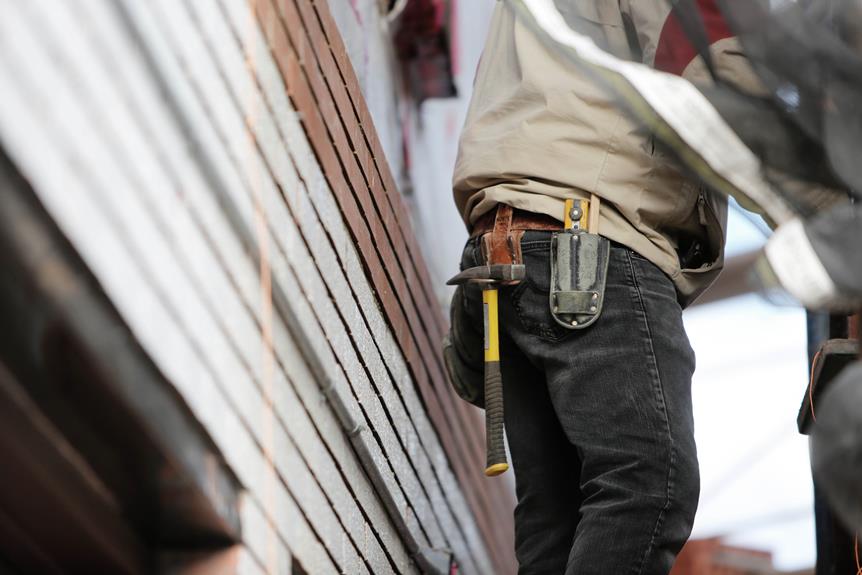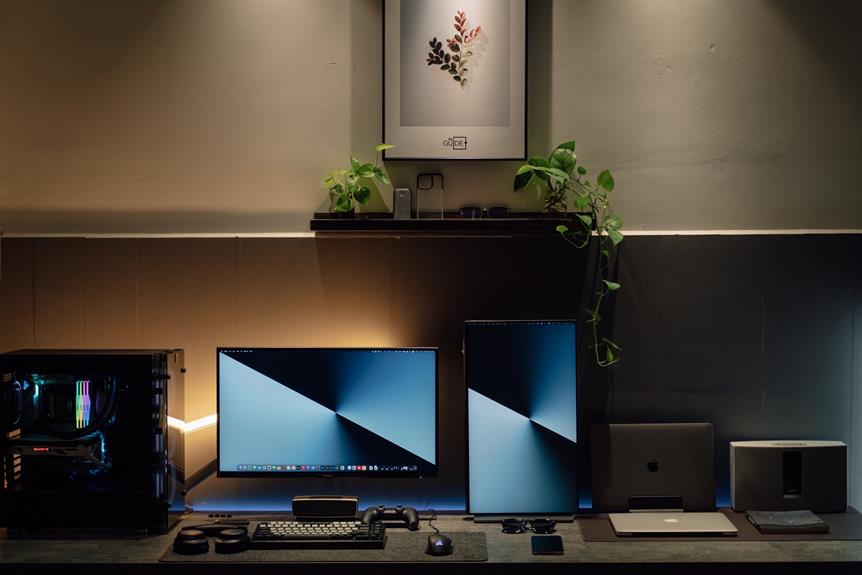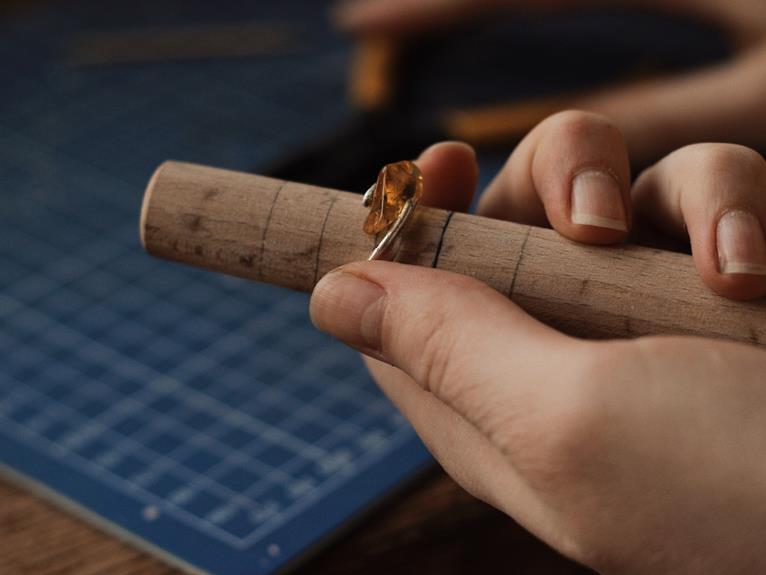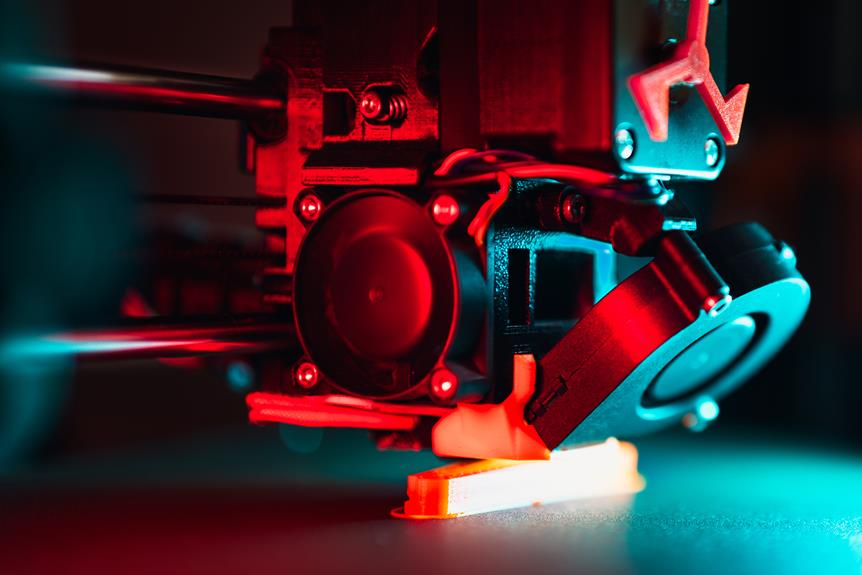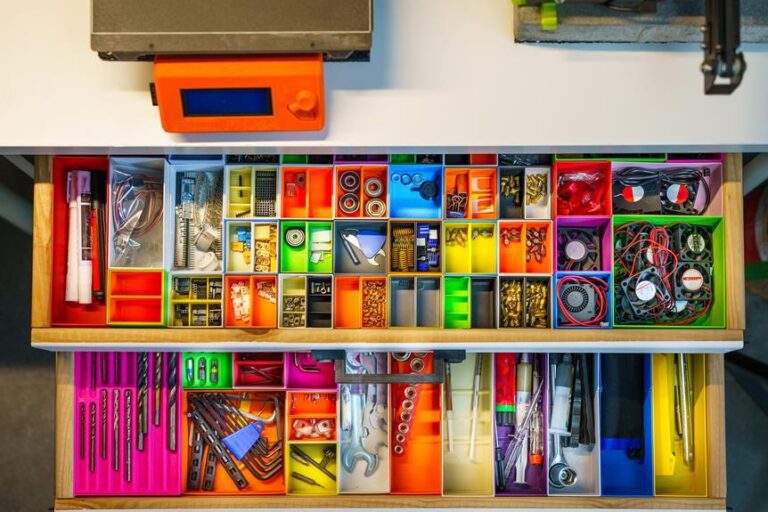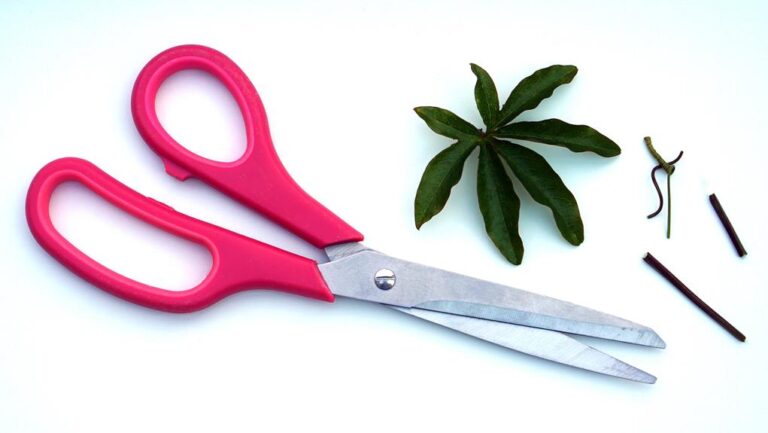Essential Tools for 3D Printer Maintenance: Must-Haves
Like a well-oiled machine, a 3D printer requires regular maintenance to ensure optimal performance and longevity.
To keep your printing endeavors running smoothly, having the right tools at your disposal is essential.
In this article, we will explore the must-have tools for 3D printer maintenance.
From cleaning to calibration, lubrication to troubleshooting, this comprehensive guide will equip you with the knowledge and tools needed to keep your 3D printer in top shape, liberating your creativity.
Key Takeaways
- Cleaning tools are necessary for maintaining a 3D printer and preventing clogs and filament flow issues.
- Lubrication tools are essential for ensuring smooth movement of components and improving the printer's performance and longevity.
- Calibration tools are necessary for achieving accurate and high-quality prints by ensuring proper alignment, level bed, and correct temperature settings.
- Having replacement parts on hand is crucial for quick repairs and maintenance, helping to maintain the printer's performance and reliability.
Cleaning Tools
When it comes to maintaining a 3D printer, having the right cleaning tools is essential for ensuring optimal performance and longevity. These tools are specifically designed to clean and maintain various components of the printer, including the nozzles and extruders. The nozzles, in particular, can easily become clogged with debris and filament residue, which can negatively impact print quality. Therefore, it is crucial to have tools such as nozzle cleaning kits and specialized brushes to effectively remove any buildup and ensure smooth printing.
In addition to cleaning the nozzles, it is also important to clean the extruders regularly. This component is responsible for pushing the filament through the printer, and any residue or jam can cause printing issues. To address this, there are cleaning tools available, such as filament cleaners and extruder cleaning wires, that can effectively remove any obstructions and keep the extruders in optimal condition.
Furthermore, cooling solutions are another aspect of 3D printer maintenance. Cooling fans play a vital role in preventing overheating and ensuring proper cooling of the printed object. Dust and debris can accumulate on the fan blades over time, leading to reduced airflow and potential overheating. Therefore, it is important to have tools like compressed air or small brushes to clean the cooling fans and maintain their efficiency.
Lubrication Tools
To ensure optimal performance and longevity of a 3D printer, utilizing appropriate lubrication tools is essential. Lubrication plays a crucial role in reducing friction and preventing wear and tear on the moving parts of a 3D printer. This not only improves the overall printing quality but also extends the lifespan of the machine.
One of the most commonly used lubrication tools for 3D printers is a silicone-based lubricant. Silicone lubricants are known for their excellent heat resistance and low volatility, making them ideal for high-temperature applications. They help in reducing friction between the various components, such as rods, bearings, and belts, ensuring smooth and precise movement. Additionally, silicone lubricants are non-reactive and do not damage the plastic or metal parts of the printer.
Another essential lubrication tool is the grease gun. Grease guns are used to apply grease to specific areas that require heavy-duty lubrication, such as the Z-axis leadscrews or the extruder gears. They provide controlled and precise application of grease, ensuring that the lubricant reaches the intended areas without any wastage or mess.
Calibration Tools
For precise and accurate printing results, proper calibration of a 3D printer is essential. Calibration tools play a crucial role in achieving the desired level of accuracy and ensuring that the printer is functioning optimally. These tools help in adjusting various parameters of the printer, such as the bed level, nozzle height, and extruder temperature, to name a few.
One of the most commonly used calibration tools is a feeler gauge. This tool is used to measure the gap between the print bed and the nozzle, ensuring that it is set at the correct distance.
Another useful tool is a dial indicator, which helps in measuring the flatness of the print bed, ensuring that it is level across its entire surface.
In addition to these tools, a digital caliper is also essential for precise measurements. This tool allows users to measure the diameter of the filament accurately, ensuring that it matches the settings in the slicer software.
Lastly, a temperature calibration tool, such as a thermocouple or an infrared thermometer, is crucial for verifying the accuracy of the printer's temperature readings. This ensures that the printer is heating the filament to the correct temperature for optimal printing results.
Replacement Parts
While often overlooked, replacement parts are a crucial aspect of 3D printer maintenance and ensuring the printer's longevity. Regular wear and tear, as well as unexpected breakdowns, can occur in any machine, including 3D printers. Having the necessary replacement parts readily available can save time and prevent costly delays in printing projects.
To help you understand the importance of replacement parts, here is a table showcasing some common 3D printer components that may require replacement:
| Component | Function | Common Issues |
|---|---|---|
| Nozzle | Controls filament flow and deposition | Clogging, wear |
| Heater Block | Heats the filament to the desired temperature | Damage, degradation |
| Thermistor | Measures the temperature of the heater block | Malfunction, inaccurate readings |
| Belts | Control movement of the printhead and build platform | Slack, stretching |
By having these replacement parts on hand, you can quickly address any issues that may arise during printer operation. It is recommended to consult the printer's manual or manufacturer's website to identify the specific replacement parts required for your model.
Troubleshooting Tools
One of the most important aspects of 3D printer maintenance is having a set of essential troubleshooting tools at your disposal. These tools are crucial for identifying and resolving any issues that may arise during the printing process.
First and foremost, a multimeter is an indispensable tool for troubleshooting electrical problems. It allows you to measure voltage, current, and resistance, enabling you to identify any faulty components or connections. Additionally, a soldering iron is essential for repairing or reattaching wires and connectors.
Another valuable tool is a set of precision screwdrivers. These come in various sizes and are used for disassembling and reassembling the printer, as well as making adjustments to components. Furthermore, a set of hex keys or Allen wrenches is essential for tightening or loosening screws and bolts.
To ensure proper calibration and alignment, a set of feeler gauges is necessary. These gauges help you measure the distance between components with precision, ensuring optimal performance. Additionally, a pair of tweezers and a magnifying glass can be beneficial for inspecting and removing any small debris or obstructions that may be affecting the print quality.
Frequently Asked Questions
How Often Should I Clean My 3D Printer and What Cleaning Tools Should I Use?
Regular cleaning of a 3D printer is essential to ensure optimal performance and longevity. The frequency of cleaning depends on usage, but a general guideline is to clean it every 1-2 months. Use tools like a soft brush, compressed air, and isopropyl alcohol for effective cleaning.
What Lubrication Tools Are Recommended for Maintaining My 3D Printer's Moving Parts?
To maintain the optimal performance of a 3D printer's moving parts, it is recommended to use lubrication tools such as silicone-based lubricants or PTFE dry lubricants. These tools help reduce friction, prevent wear and tear, and ensure smooth operation.
How Do I Properly Calibrate My 3D Printer and What Calibration Tools Are Necessary?
Properly calibrating a 3D printer is crucial for achieving high-quality prints. To ensure precise calibration, essential tools include a digital caliper, feeler gauge, leveling mat, and a calibration cube.
Where Can I Find Replacement Parts for My Specific 3D Printer Model?
To find replacement parts for your specific 3D printer model, it is recommended to consult the manufacturer's website or authorized resellers. They typically offer a range of genuine parts that are compatible with your printer for optimal performance and reliability.
What Troubleshooting Tools or Techniques Can I Use to Fix Common Issues With My 3D Printer?
To troubleshoot common issues with your 3D printer, various tools and techniques can be utilized. These include checking for loose connections, calibrating the printer, cleaning the nozzle, and updating firmware.
Conclusion
In conclusion, maintaining a 3D printer requires the use of essential tools such as cleaning brushes, lubricants, calibration devices, replacement parts, and troubleshooting aids. These tools serve as the foundation for ensuring the printer's optimal performance and longevity.
Just as a skilled sculptor relies on their tools to shape a masterpiece, a 3D printer enthusiast must rely on these tools to create their own intricate works of art.
With the right tools at hand, the possibilities of 3D printing are truly limitless.
